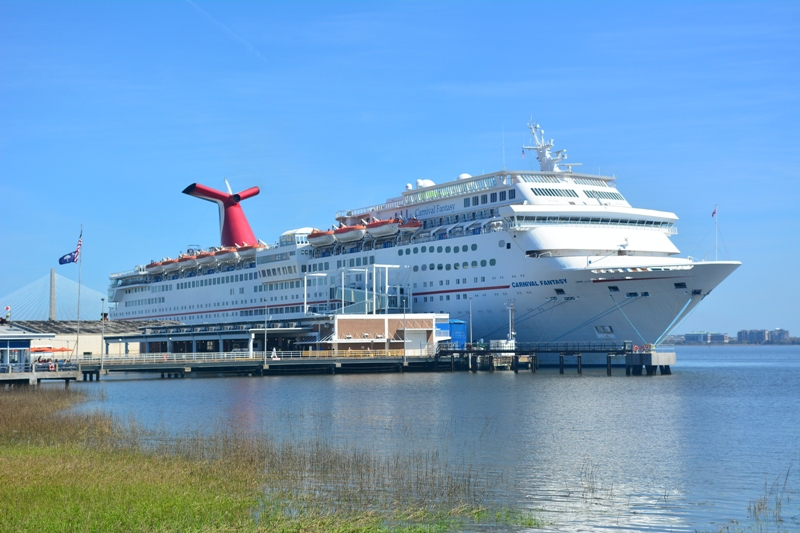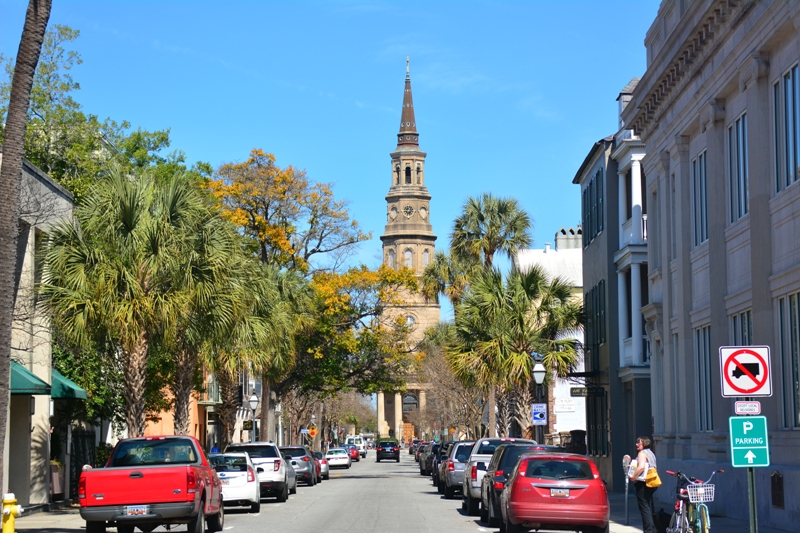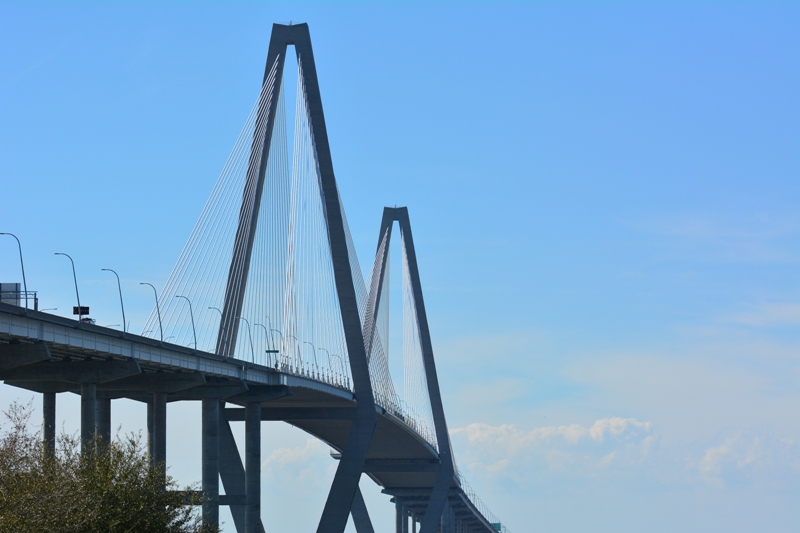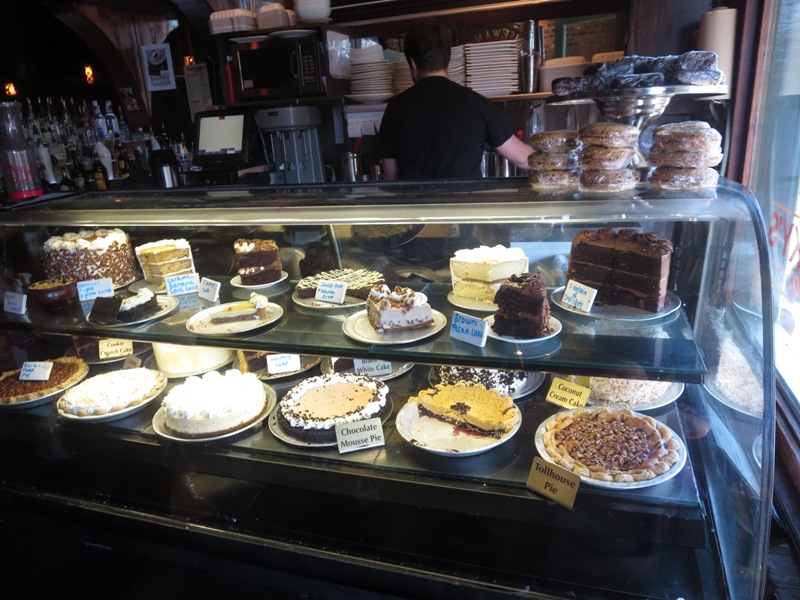Charleston, SC
We decided to go for a drive and see some sights other than Myrtle Beach. Charleston was our pick. It too us over 2 and 1/2 hours to get there, of course we went to Angel Oak first which was about 30 mins out of our way. We loved Charleston but we were over dressed for a day of visiting.
The Charleston City Market. Established in the 1790s, the market stretches for four city blocks from the architecturally-significant Market Hall, which faces Meeting Street, through a continuous series of one-story market sheds, the last of which terminates at East Bay Street.


We were going to take a carriage ride but there were a few factors that I should have taken into consideration (1) the temperature. It went up to 82 degrees F the day we visited; and (2) because it was so hot Sharon felt sympathy for the horse(s) that had to pull the wagon. I had to agree, plus I looked at how they packed in the people and thought that I would have a hard time to get good pictures from a cramped position.

Colors of the building are great to look at


The lady to the right is making baskets. This is a common past-time for some people. You may think that it is a "trinket" to use for apples or fruit etc. Let it be known that these are Sweetgrass baskets. Sweetgrass baskets are almost identical in style to the shukublay baskets of Sierra Leone, where learning to coil baskets "so tightly they could hold water" was an important rite of passage in West African tribes like the Mende and the Temne.This basket-making tradition came to SC in the 17th century by way of West African slaves who were brought to America to work on plantations. West Africa resembles South Carolina in both climate and landscape, and rice had long been cultivated there. In slaves, plantation owners gained not only free labor but also a wealth of knowledge and skill. It is interesting to note that early baskets were made not from sweetgrass but from bulrush, a tough plant well-suited for heavy plantation use. Further, Bulrush – or russia as it sometimes called – isn't botanically a bulrush at all. It is actually a needle rush (Juncus romanearus). Many Lowcountry residents will recognize this as the tall, dark marsh grass that grows alongside our green Spartina.


I was at one of the doors of the market to take a picture of some store fronts

The pineapple Fountain is located in the Waterfront Park. One thing I learned is that "pineapple" motifs are common in Charleston and represent hospitality.

In the distance is Fort Sumter. They say this is where the American Civil war actually began in 12 April 1861 when Confederate artillery opened fire on this Federal fort in Charleston Harbor. Fort Sumter surrendered 34 hours later. Union forces would try for nearly four years to take it back.

Notice I am in jeans (Bootlegger) when I should have been in shorts. 82 degrees is too hot...

Carnival cruise line has a departure from Charleston. It goes to the Bahamas and many Eastern Caribbean destinations. I found the prices are really low in January and Feburary. In talking to one of the waitresses in T-Bonz, she said that they could go up to the cruise line the day of departure and be able to get on for a "very low price" as they just want to fill empty cabin spaces. Nice if you live there and like cruises.


Right behind the cruise ship is the beautiful Arthur Ravenel Jr. Bridge. More on that later.

This picture is nearly the same but Sharon has a dreaming look about her.

USS Yorktown-more on her later.





A walkway seen during our walk. Quaint little place



In the background, you will notice the Yorktown.








Arthur Ravenel Jr. Bridge. The bridge has a main span of 1,546 feet (471 m), the third longest among cable-stayed bridges in the Western Hemisphere. It crosses the Cooper River. The bridge goes from Charleston to Mt Pleasant.


Kaminsky's and T-Bonz. They seem to be together where-ever you go. In Myrtle Beach we ate at T-Bonz and they served us a great Key Lime pie. We asked where it was made and they told us it came from Kaminsky's in Charleston. So, while in Charleston we decided to give it a try. We were disappointed. The pie, increadibily, was not as good!!





This photo was from inside T-Bonz

Where I am now is called the Mt Pleasant Pier. Part of the Memorial Waterfront Park complex, the 1250-foot long Mount Pleasant Pier stretches out into Charleston Harbor under the foot of the Arthur Ravenel, Jr. Bridge.

The USS YORKTOWN (CV-10) was the tenth aircraft carrier to serve in the United States Navy. Built in an amazing 16-½ months at Newport News, Virginia, YORKTOWN was commissioned on April 15, 1943, and participated significantly in the Pacific Offensive that began in late 1943 and ended with the defeat of Japan in 1945. YORKTOWN received the Presidential Unit Citation, and earned 11 battle stars for service in World War II. Much of the Academy Award-winning (1944) documentary "The Fighting Lady" was filmed on board YORKTOWN.




Again this is one of many (and I mean many) little huts that would sell the baskets. And the baskets were not inexpensive...we are talking in the hundreds of dollars.

Back